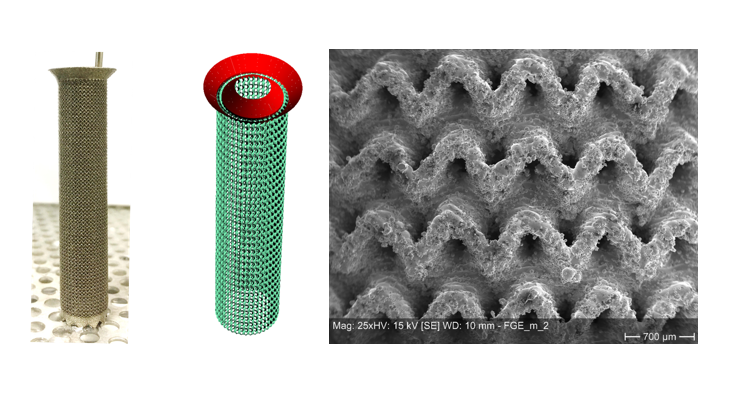Experimental characterization of additive manufactured (3D-printed) absorption structures
- chair:
-
place:
Bachelor's Thesis / Student Assistant
-
institute:
IMVT
-
starting date:
Immediately
- Kontaktperson:
-
Background and motivation
The dramatic effects of climate change are becoming increasingly apparent. In order to limit the consequences, anthropogenic CO2 emissions must be dramatically reduced. One major source is the transport sector, which currently consumes half of the world's oil production. Liquid fuels with their high energy density will continue to be very difficult to replace by e-mobility or hydrogen in certain sectors (e.g. heavy goods vehicles and air traffic) in the future. The so-called power-to-fuel processes are one way of making these sectors CO2-neutral. One promising process is the conversion of hydrogen and carbon monoxide from renewable sources into long-chain hydrocarbons using Fischer-Tropsch synthesis. However, the raw product obtained must still be separated into suitable cuts (petrol, diesel, kerosene, etc.). This process must be designed efficiently for small, decentralized plants at renewable energy sites. The rectification of the raw product is a decisive step in this process.
In recent years, additive manufacturing ("3D-printing") has greatly expanded the possibilities of manufacturing. In process engineering, in particular, new devices that are optimally adapted to the desired functions are becoming manufacturable. The flow guiding elements (FGE) developed at the IMVT (https://www.imvt.kit.edu/1649.php) are an example for these new opportunities. These possibilities are now to be used to develop a new compact, energy-efficient rectification apparatus.

Figure 1: Adapted fluid guiding elements (FGE) for absorption and distillation processes (FGE, CAD model and SEM image of the microstructure).
Research topics and tasks of the work:As part of the bachelor's or master's thesis, these flow control elements (compare also Figure 1 and https://pubs.acs.org/doi/abs/10.1021/acs.iecr.9b04548) are now to be investigated with regard to their application for the absorption of CO2 in water/sodium hydroxide solution. By means of this model system the wetted area and the intensification of the mass transfer shall be investigated. These results can be used as a starting point for the optimization of the elements for distillation. The structures can be varied by several (geometric) parameters, therefore the work can include a statistical experimental design. A further characterization of the surfaces (SEM images, profilometry) and their properties (contact angle, capillary rise, wetting behavior) will be used to interpret the results.
Tasks of the work are:
- Printing of different structures by selective laser melting;
- Characterization of wetting properties (capillary rise height, contact angle);
- Characterization of the printed structures with respect to the absorption of CO2 in water or caustic soda solution
The scope (Bachelor's thesis, Master's thesis or internship) as well as the focus of the thesis can be determined by arrangement. Basic knowledge of chemistry/chemical engineering is required.
Start of the thesis: immediately
Examiner: Prof. Dr.-Ing. R. Dittmeyer
Supervisor: M. Sc. F. Grinschek
